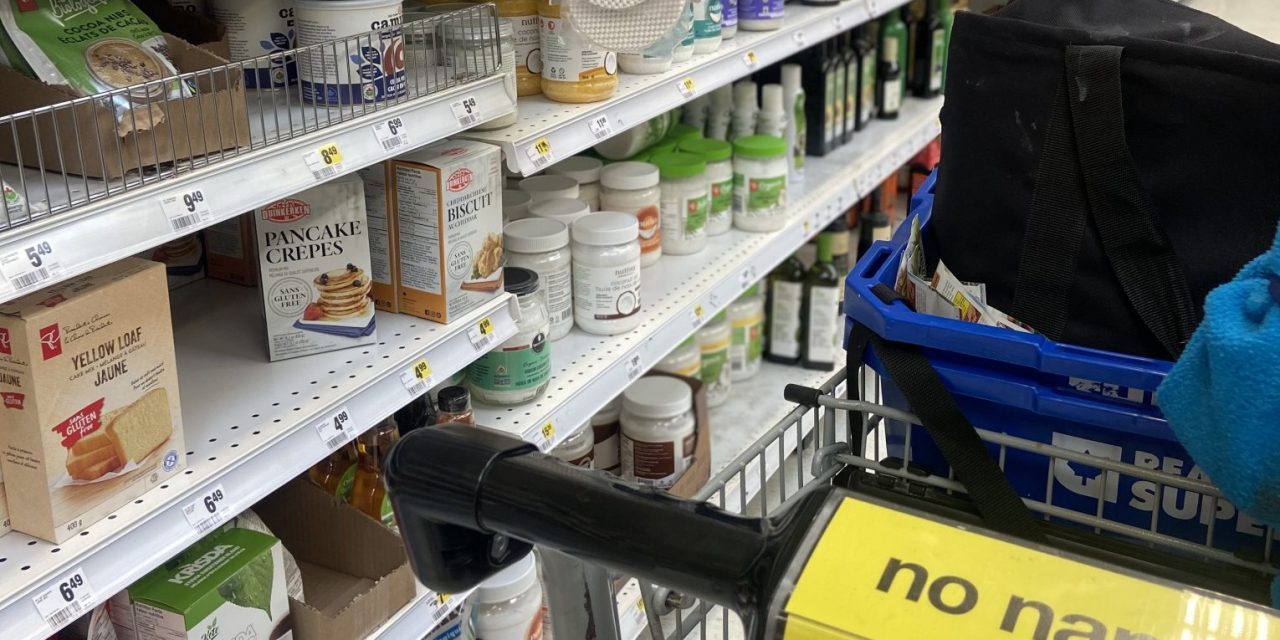By Charles Z. Levkoe
For anyone not growing or harvesting everything they eat, it has become painfully obvious that food prices are on the rise. Whether it’s your go-to snack or basic necessities, everyone is shelling out more for everything at the grocery store. According to the Food and Agricultural Organization (FAO), food prices increased by about 33% across the globe between September 2020–2021. By the end of the year, food prices reached their highest levels in over a decade.
In Canada, food prices are predicted to increase by as much as 7% in 2022. According to a report from Dalhousie University’s Agri-Food Analytics Lab, this means that the average Canadian family will be spending almost $1,000 more on groceries this year. This increase has been caused, in part, by inflation, which refers to the increase in costs of goods and services while wages and other incomes stay the same. Food prices have been increasing for some time now, and the pandemic has only accelerated that trend. In addition, increasing fuel prices, labour shortages, the impacts of climate change, and global conflicts have made things even more challenging.
Increases in food prices are revealing what we already knew about the structural problems in our food system—namely, that food supply chains are fragile and support structures are insufficient. In addition, corporations continue to make record profits and will do almost anything to maintain them. Those most impacted by the spike in food prices are families who were already financially vulnerable and struggling to make ends meet well before the pandemic began. In early 2019, there were already 4.4 million people in Canada (including over 1.2 million children) living in food-insecure households. Today, over 6 million Canadians are facing food insecurity. We know that this is primarily a result of poverty and inequity, and that those experiencing more significant impacts are people that are economically insecure. Data shows that this includes a disproportionate number of Black and Indigenous households.
It is essential to help people in times of emergency, but food insecurity has become a permanent feature of our society. Food banks and other food-based charity programs are not enough. Most of these programs are severely under-resourced and under-equipped to address the severity of the problem. Addressing food insecurity demands a collective response and a transition towards a more equitable food system that includes more control for food producers, harvesters, and eaters.
Real solutions start with communities (like Gaagige Zaagibigaa, an Indigenous-led initiative supporting the resurgence of Indigenous food systems in Northwestern Ontario) and building connections (like the Thunder Bay and Area Food Strategy, which brings together organizations and institutions across the region). Governments need to implement policies and programs that address social inequity. Evidence shows that there can be real impact through implementing a livable wage and guaranteeing sick pay to all workers, increasing social services, implementing a guaranteed annual income, providing more affordable housing, following through on the commitment to support self-determination of Indigenous communities, and addressing climate change.
The problem of rising food prices is not going away any time soon. But with a little bit of creative thinking, collaboration, and political will, we can ensure everyone is taken care of.















